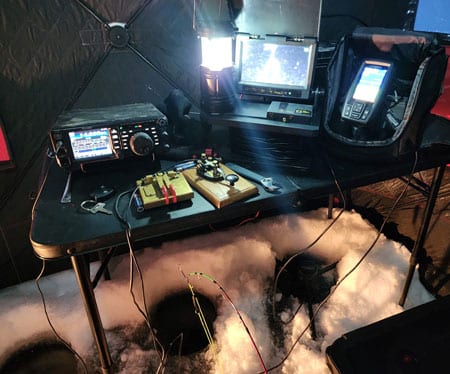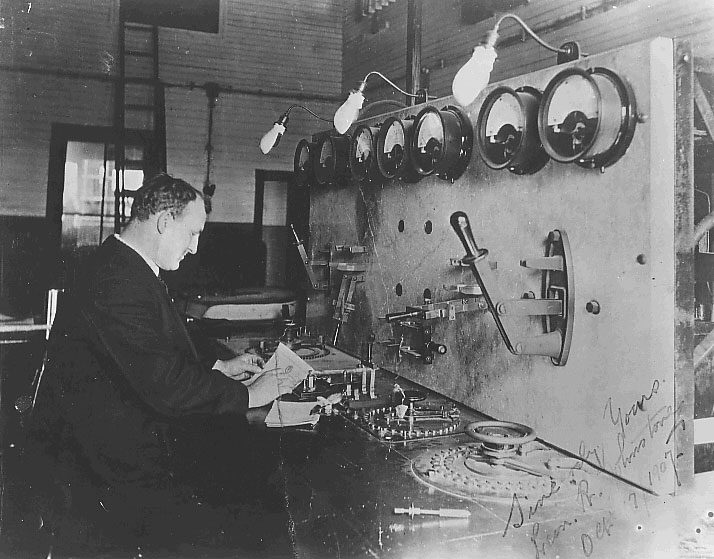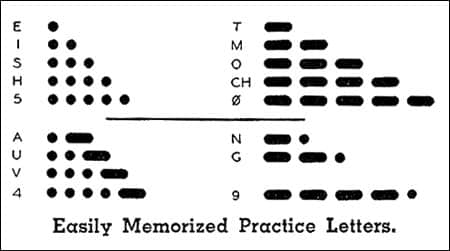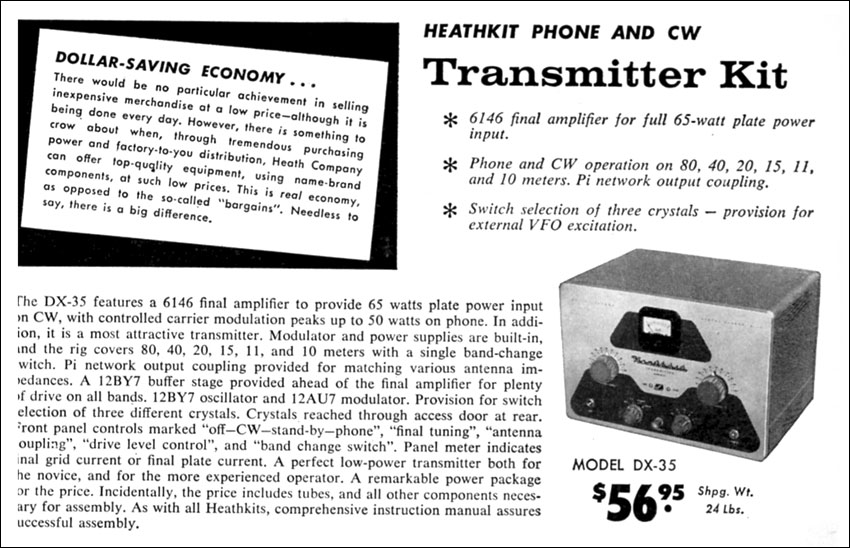This is a free fortnightly newsletter about the New Zealand Net.
If you would like to be notified by email when a new edition is published, please contact ZL1NZ.
Browse our Newsletter Archive and List of Net Tips.
Featured key

Photo: cwmorse.us
The Magnetic Tension CNC Aluminium Pocket Double Paddle Key is made by CW Morse in the USA.
Designed for portable operation, it is built with solid brass contacts and stainless steel fasteners. The Neodymium magnets for tension and gap adjustments are nickel plated.
The main body is made from a single piece of 6061 aluminium. Edges are CNC chamfered and the aluminium components are hard anodised.
Double shielded ball bearings provide “super smooth high speed action” and each paddle has a 3D hemi finger grip.
These paddles sell for US$134.95. Get details.
* If you have an interesting key for this feature, please send a nice clear photo and a few words describing it.
Quick notes
 As we head towards winter, don’t forget that you can still check into the NZ Net while ice fishing at night. The photo shows how to set up your ice fishing tent / ham shack. (NZ Net accepts no responsibility for whatever happens next.)
As we head towards winter, don’t forget that you can still check into the NZ Net while ice fishing at night. The photo shows how to set up your ice fishing tent / ham shack. (NZ Net accepts no responsibility for whatever happens next.)
Another report has been highly critical of New Zealand’s emergency preparedness. The inquiry, chaired by former Governor-General Sir Jerry Mateparae, found the country is not ready to respond to large-scale emergencies. Several recommendations in the report relate to better communications systems and greater reliability of communication infrastructure.
We have some very fine people in the NZ Net. In the past few weeks, Paul ZL1AJY helped me put up a new aerial for 80 metres. First, Paul heaved a line over the top of an oak tree, then he built one of his contest-winning transmission lines (ask him about it). Also, Bede ZL4KX helped me modify my 50-year-old linear amplifier so I can use it safely with a modern transceiver. Bede has the same amp, and did the mod many years ago, but couldn’t quite remember the details. So he took his amp apart just so he could send me photos showing what I needed to do! Thanks so much to both these fine gentlemen.
Re the 1970 NZPO advert for radio operators in NZ Net News 130, Bob ZL1AYN recalls being accepted for the role. He was an Army signaller, but his lack of maritime radio experience meant he would have to start as a Post Office Cadet – and wouldn’t earn enough to support his family – so he declined the opportunity.
The NZ Net consultation has been generating a lot of responses. Thanks to all who have sent their ideas for improving the net. If you haven’t done so already, could you please do so by the end of this weekend so that your Net Control Committee can start reviewing them. Simply email your comments/ideas to ZL1NZ. Thanks!
Photo flashback

The Marconi Wireless Company started the first commercial trans-Atlantic wireless network in 1907. The North American station was near Glace Bay, Cape Breton Island, on Canada’s Atlantic coast. The European station was at Clifden, Ireland.
The photograph shows chief operator LR Johnstone at the Glace Bay station transmitting messages to Clifden. This photo was taken on the official opening day of the trans-Atlantic service, 17 October 1907.
The photo is inscribed:
Sincerely yours
Leon. R. Johnstone
Oct. 17/1907
Greetings in various languages
Members of Japan’s A1 Club are compiling a list of expressions to use when working an operator who speaks a different language.
Here is the preliminary list, but it is very much a work in progress.

If you can suggest additions, please contact Hiro JJ1FXF.
We hope to have a more comprehensive version of this list in a future edition of NZ Net News.
Morse musings
 John ZL4RO was browsing through an old book on telegraphy and came upon the characters shown here. He was intrigued by CH, and wondered about its origins.
John ZL4RO was browsing through an old book on telegraphy and came upon the characters shown here. He was intrigued by CH, and wondered about its origins.
The CH character (dah-dah-dah-dah) can be found in Gerke’s 1848 simplification of the original code developed by Morse and Vail. Gerke did us all a huge favour, by getting rid of internal spacing in characters, and by making all the dahs the same length. His main interest was in the efficiency of the German telegraph system, and apparently having a character for CH was part of that effort. (Also of interest, he did not distinguish between I and J, and used dit-dit for both.)
Although Gerke’s Continental Code was mostly adopted into the International Code that we use now, the CH character was left behind.
I suspect it is still used by operators in some countries where it suits the language (along with many other special characters that are rarely heard by English-speaking operators).
I did a little calculation, and found that although CH (dah-dah-dah-dah) sounds long, it is actually 32% shorter than sending the letters CH separately. Maybe we should bring it back!
While I’m musing, here’s a question for you to consider: “How many letters are in the official ITU Morse alphabet?” Hint: It’s not 26.
Morse challenge
Before we get into this recording, I should explain a few things for anyone who is not familiar with the National Traffic System (NTS), which operates in Canada and the USA.
The NTS is a network of amateur radio traffic nets, each of which sits in a particular tier (Local/Section, Region or Area). Messages typically go into the system through a local level net (the lowest tier), then work their way up the tiers as far as necessary before coming back down into another local net for delivery.
The top tier comprises the Area nets, which relay traffic over long distances. One of these is the Western Area Net (0330Z on 7052 kHz) which you will hear in this recording I made a couple of days ago.
Much will sound familiar if you’ve been taking part in NZ Net, but a few things are different. For example, Net Control asks for check-ins in pre-arranged order (QNA) or asks for stations representing specific other nets. (Area nets do not take casual check-ins.)
Challenge: In this recording, NCS is Tom. The first three operators to check in are Ken, Don and Dave – but what are the callsigns of these four fellows?
Just one more twist: When Tom arrived on the net frequency, he found it occupied by a couple of guys chatting about railroads – so you’ll hear me following him up 1 kHz. 🙂
Please send your answer (4 callsigns) via radiogram or email to ZL1NZ.
Answer to previous Morse Challenge
1) The three “words” in the audio recording were MEEOIOOI MISMTEMI ITEOIMMS.
2) They are notable in that all the characters are either only dit(s) or only dah(s).
3) This is EMITSO code, developed and being transmitted by Mark ZL1MRT.
Correct answers were received from ZL1ANY, ZL1BBW and ZL2TE. Stephen ZL1ANY even knew that it was EMITSO code, being sent by ZL1MRT. See the next item for related information.
Using CW for data transmission

By Mark ZL1MRT
In today’s computing environment, information is stored and processed as binary, but more generally relates to some higher order alphabet. The ASCII code is an example of such a mapping of an alphanumeric set of symbols and punctuation characters to 7-bit binary words. From a communications perspective the meaning attached to a given sequence is largely irrelevant and the purpose of the communications medium is to faithfully reproduce the symbol syntax at a receiver.
CW seems to be a suitable candidate for fall-back emergency communications in the future. Its simplicity, potential reach at low power, human readability, and low level of technical complexity are obvious features in its favour. Also, the ubiquitous Raspberry Pi makes CW relatively accessible for the unskilled (people like me).
The challenge then is to exploit CW for the efficient communication of binary or other data formats, for example compressed text messages.
Thus emitso provides a way to communicate arbitrary binary, octal, decimal and/or hexadecimal data encodings over CW. A simple to use linux/unix command line utility facilitates in the encoding and decoding of data to and from CW Morse.
The emitso code exploits the shorter Morse letters, thereby achieving reasonable efficiency while retaining human readability. With structured framing of the emitso code, errors are more readily detectable. While not intended as an error correcting code, this will facilitate in error detection and correction. Given CW’s inherent robustness, it’s more likely ARQ will prove to be effective and more efficient than the overheads implicit in forward error correction coding.
The table below sets out an assignment of emitso code, formed by pairing any one of the three shorter morse code letters, E, I & S with any of the slightly longer letters T, M, O. This gives nine possible combinations of dits and dahs: ET, EM, EO, IT, … , SM, SO. Allowing for the juxtaposition of letter pairs; e.g. TE, ME, OE, TI, … , MS, OS, a total of eighteen letter pairs is then available. However, to avoid the possibility of a combination resulting in a sequence that includes SOS, which is widely recognised as an emergency call, we specifically exclude letter pairs SO and OS. This leaves a useable total of 16 letter pairs.

For transmission purposes, letter pairs are combined to form six-letter and/or eight-letter words each separated by a space to assist in operator decipherability. Code words are instantly recognisable in that only the emitso subset of letters ever appears. Moreover, no six or eight letter emitso word corresponds to a valid English language word. In this respect emitso words may even be intermingled with other text without ambiguity.
This method of encoding is not intended to obscure content, but to enable a more flexible exchange of data over CW, and in such a way as to facilitate error-free messaging. Currently emitso is being used with a large-dictionary compression scheme to achieve efficient text messaging over CW.
Testing underway
 The test signals emanate from Auckland and use a Pi Zero 2 W (~$34 from PBTech) which is about half the size of a credit card and uses the PiCW software from Github to generate the CW. Currently, trials include compressed news headlines, the focus being on refining message encapsulation and error handling across various RF links.
The test signals emanate from Auckland and use a Pi Zero 2 W (~$34 from PBTech) which is about half the size of a credit card and uses the PiCW software from Github to generate the CW. Currently, trials include compressed news headlines, the focus being on refining message encapsulation and error handling across various RF links.
The PiCW outputs RF on pin 4 (~10mW). Our basic ‘hat’ borrows a popular solution using a 74HC240 chip (octal buffer) to raise this to ~200-300mW and supports band-specific QRP plug-in LP filters. A further prototype adds an additional IRF510 FET to give ~4.5W on the 40m band and about 2.5W on the 11m amateur band.
My 40m rig is a Jaycar 4.5m telescopic mast ($86) with small plastic box mounted at the top containing the Pi and hat. It connects directly to the inverted V antenna and is powered from a 12V solar panel – or more usually from a li-ion scooter battery. It is accessed via the home Wifi, so no cabling is required from the house.
On the decoding side, I’ve developed a software driver for the RTL-SDR, but can also use a Python driver (also available from Github) which takes the I/Q stream from any KiwiSDR receiver. The latter makes for useful longer distance testing. With this configuration I have been able to demonstrate sufficiently robust message exchanges down country with the 4.5W QRP. More difficult with 200mW, but doable.
A small 7-inch touch screen attached to the Pi provides a useful realtime display (see top photo) of signal spectrum and the demodulated data as well as the decoded emitso messages.
Video: SS France / FNNR
Advertising archive

November 1956
Suggestions?
If you have suggestions on how to make the NZ Net better, or things you’d like to see covered in these updates, please contact ZL1NZ. You might even like to write something for the newsletter.
Thanks for reading, and I hope to hear you soon on the NZ Net!
—
Neil Sanderson ZL1NZ, Net Manager
New Zealand Net (NZ NET)
3535.0 kHz at 9pm NZT Mon-Fri



